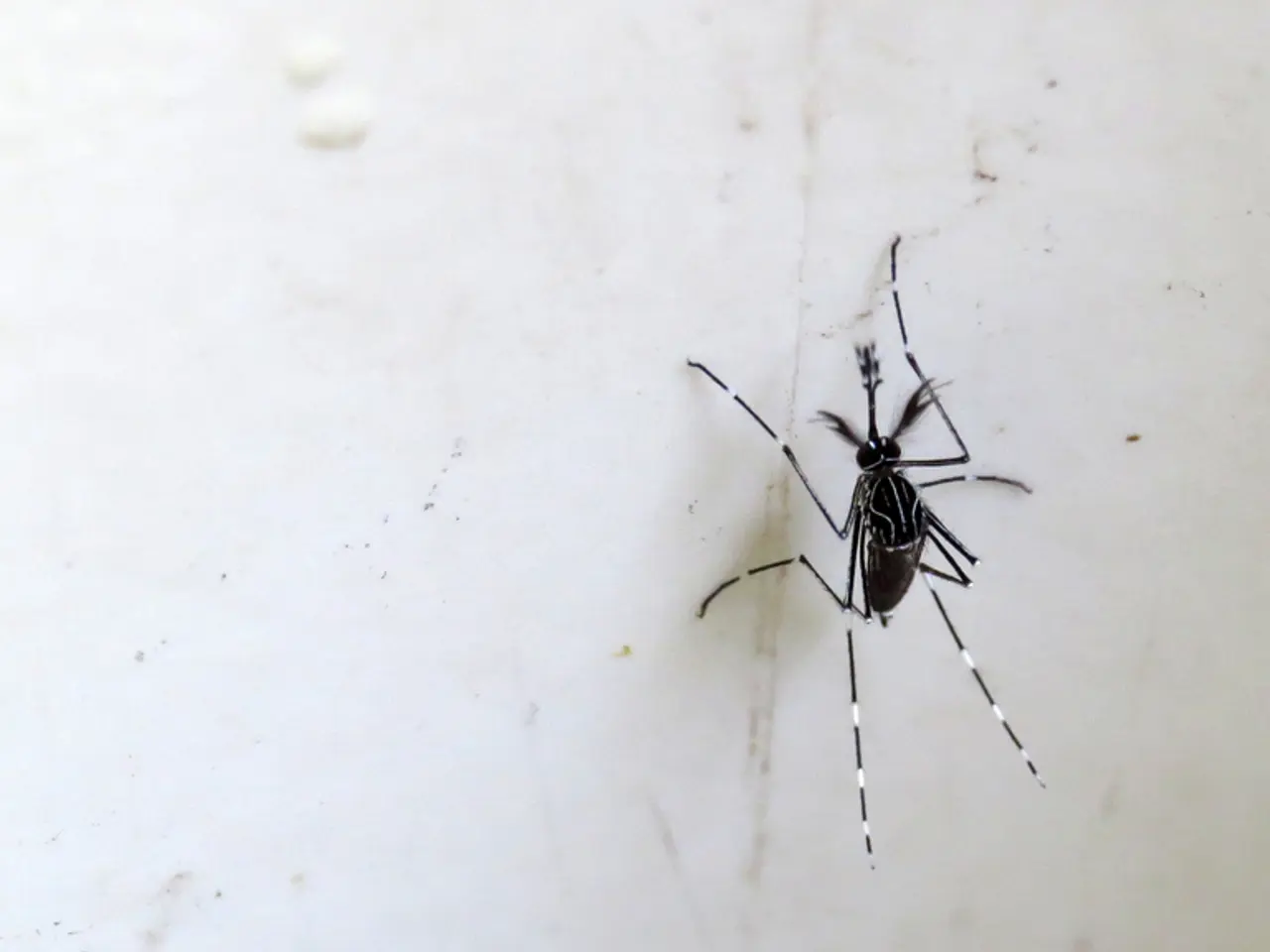Further deaths reported in Italy due to West Nile virus
The West Nile virus (WNV) has been making headlines in Europe this year, with Italy being one of the countries most affected. The Latina province of the Lazio region has reported the highest number of human cases, with 43 cases confirmed in just one week [1][3][5]. As of late July 2025, Italy has confirmed 89 cases and at least 8 fatalities [1][3].
The virus, presumed to have been introduced to Germany via migratory birds, has also been reported in several other European countries, including Greece, Bulgaria, France, and Romania [1][3][5]. In Germany, while specific 2025 data on WNV cases is not available, the general spread of mosquito-borne viruses, including WNV, is linked to mosquito vectors such as Culex species, which are expanding their range northwards due to climate change effects [4].
The increase in WNV cases in Italy and the broader spread in Europe can be attributed to several factors. Climate change, with its rising temperatures and changing precipitation patterns, creates more suitable environments for mosquito vectors to survive and breed in new regions, thus expanding the geographic range of both vectors and the virus itself [2][4]. Environmental changes, such as deforestation, urbanization, and habitat modifications, also influence mosquito ecology and increase the potential for virus transmission to humans [2].
Increased travel, movement of bird reservoirs (which carry the virus), and urban crowding further facilitate the virus spread [2]. The transmission of WNV to humans and other mammals occurs via mosquitoes infected via birds, according to the Robert Koch Institute (RKI) [4].
Seasonality also plays a role, with WNV transmission peaking in warmer months (summer), consistent with mosquito activity, as seen in Italy’s 2025 cases primarily occurring during summer weeks [1][3].
Experts predict that the number of cases will continue to increase due to climate change. Last year, there were 36 deaths linked to West Nile fever in Italy, according to the state health institute [6]. The majority of these deaths occurred in the region around the Italian capital. The three latest deaths from West Nile fever occurred in men aged 71, 73, and 79 [7].
The West Nile virus, which originates from the African continent, typically causes mild, non-specific symptoms such as fever or headache in about 20% of cases, as per the RKI [4]. However, only about 1% of West Nile virus infections lead to severe neuroinvasive diseases [2].
In Germany, several infections have been registered each year since 2019 [4]. The RKI is the source for the information about the West Nile virus in Germany. As the warming climate continues to create more favourable conditions for mosquito-borne viral diseases, public health challenges persist across European countries with temperate climates.
References:
[1] BBC News. (2025, July 29). West Nile virus: Italy records more than 80 cases. Retrieved from https://www.bbc.com/news/world-europe-58151920
[2] European Centre for Disease Prevention and Control. (n.d.). West Nile virus. Retrieved from https://ecdc.europa.eu/en/west-nile-virus
[3] Reuters. (2025, July 29). Italy's West Nile virus cases hit 89, with at least eight deaths. Retrieved from https://www.reuters.com/world/europe/italys-west-nile-virus-cases-hit-89-least-eight-deaths-2025-07-29/
[4] Robert Koch Institute. (n.d.). West Nile virus. Retrieved from https://www.rki.de/DE/Content/Infekt/Virologie/Arboviren/West_Nile_Virus/West_Nile_Virus_node.html
[5] World Health Organization. (n.d.). West Nile fever. Retrieved from https://www.who.int/news-room/fact-sheets/detail/west-nile-fever
[6] Italian State Health Institute. (2024, August 12). West Nile virus. Retrieved from https://www.iss.it/portale/nuova_estrazione/dettaglio_documento/IDDOCUMENTO/34406
[7] ANSA.it. (2025, July 30). Three more fatalities from West Nile virus in Italy. Retrieved from https://www.ansa.it/sito/notizie/archivio/2025/07/30/tre-piu-morti-da-virus-west-nile-in-italia_7e34c0e1-3d6f-424c-b760-598a893db7f5.html
- The emergence of neurological disorders could potentially arise from the increased spread of West Nile virus (WNV) due to climate change, as the virus is known to cause severe neuroinvasive diseases in about 1% of its infections.
- In light of the health-and-wellness discourse, it's crucial to address the growing concern of medical-conditions associated with the WNV, such as West Nile fever, and the role they play in fitness-and-exercise routines, especially during summer months when transmission peaks.
- As the West Nile virus continues to expand its geographical range, both in Europe and beyond, research and development in the realm of science, particularly for treating and preventing WNV, becomes increasingly relevant in ensuring public health and wellbeing.




